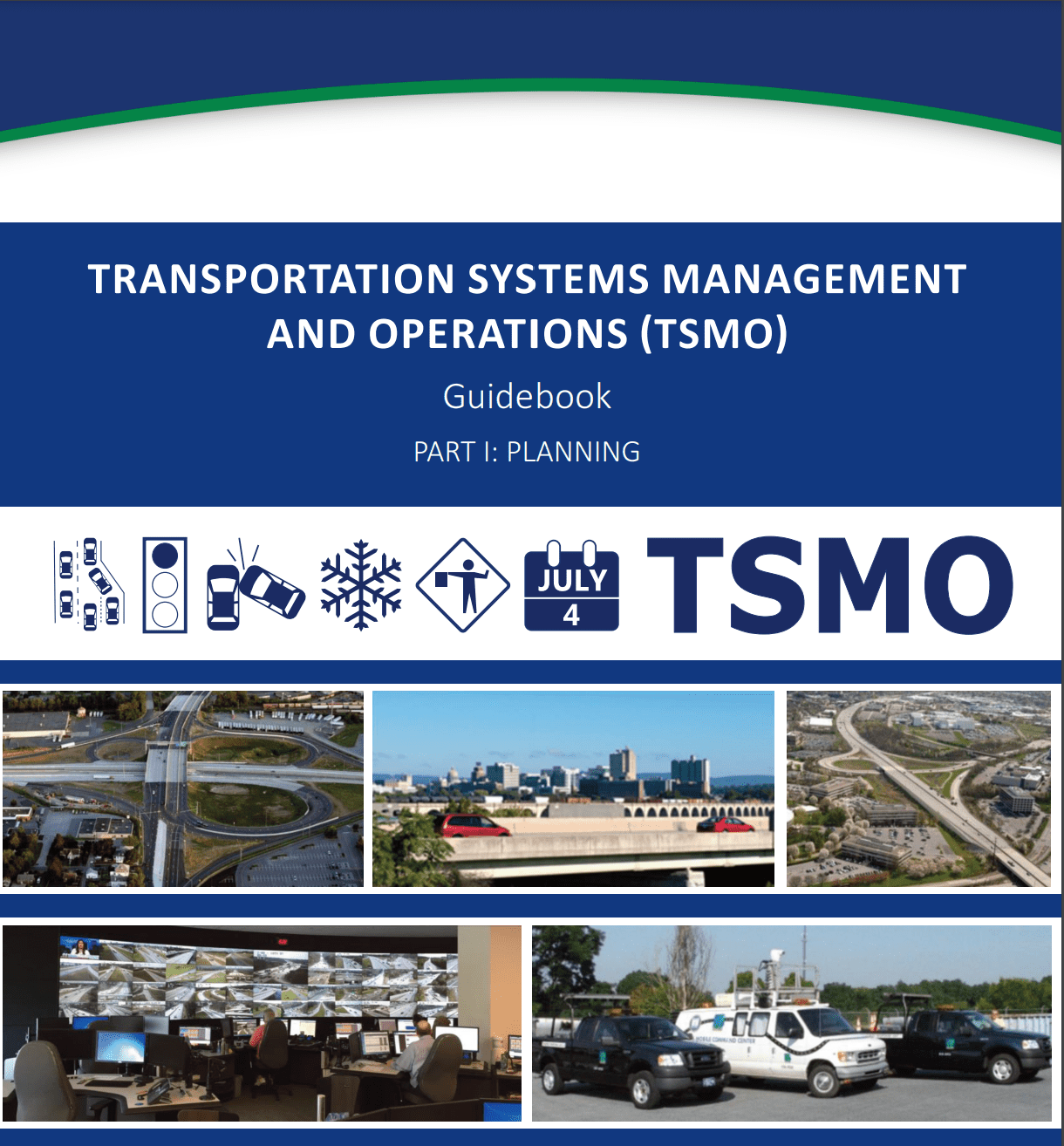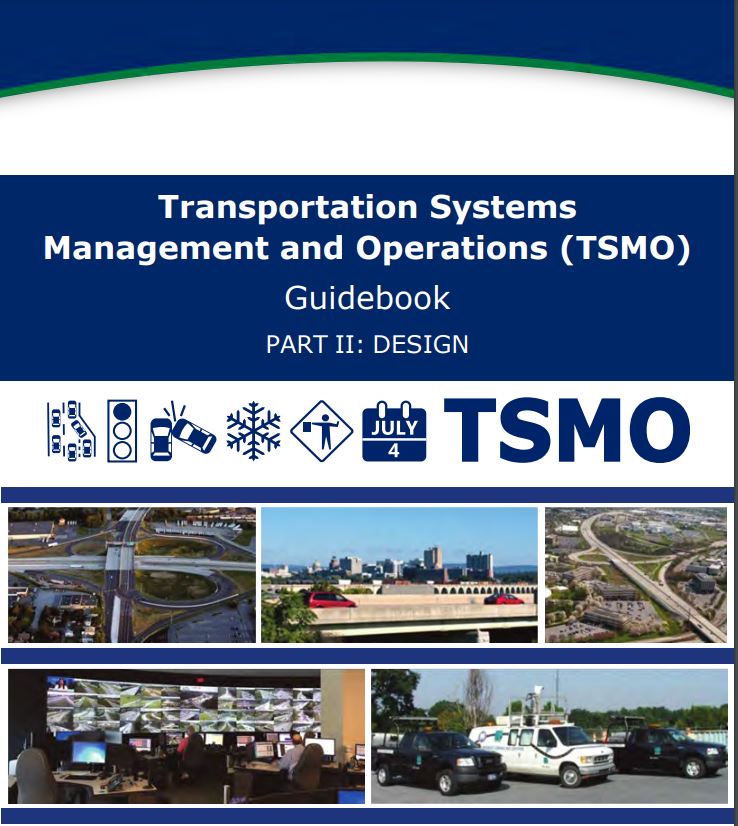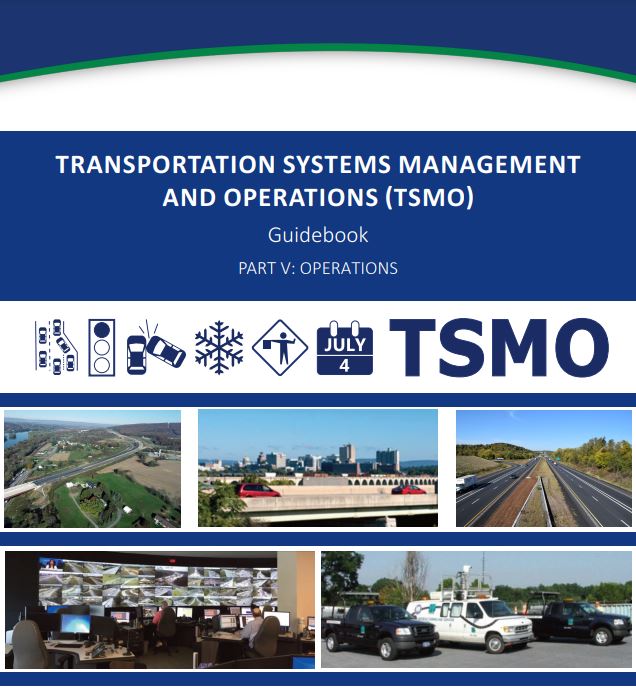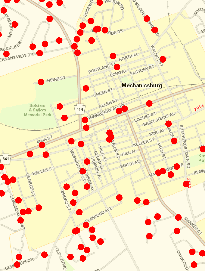There are numerous resources available related to TSMO planning and design. Brief descriptions of a few pertinent reference documents and resources are shown below.
TSMO Strategic Framework for Pennsylvania (PDF): The framework is designed to make the case for TSMO in Pennsylvania to improve mobility and reliability, safety, and funding dedicated to operations. This document is intended to be used by PennDOT, planning organizations, and stakeholders, but can also be used as a public-facing tool to increase awareness on the benefits of TSMO.
TSMO Program Plan for Pennsylvania (PDF): The program plan is based on needs, strategies, and actions that were created during stakeholder outreach that are specific to the development and advancement of TSMO in Pennsylvania. It also includes an action plan that delegates responsibilities, outlines dependencies with other strategies, and lists additional resources needed to accomplish the strategy/action. This document is intended to be used by PennDOT Central Office and districts to help identify what actions are necessary for the advancement of TSMO.

Pub 851 - TSMO Guidebook Part I: Planning (PDF): This guidebook is intended for professionals responsible for planning and operations within Pennsylvania who are working for or on behalf of PennDOT, MPOs, RPOs, and local municipalities. The document describes how TSMO fits within the overall transportation planning process and provides guidance for the preparation of two key planning documents for TSMO implementation: Regional Operations Plans (ROPs) and Business Area Plans.


Pub 852 - TSMO Guidebook Part II: Design (PDF): Publication 852, TSMO Guidebook, Part II: Design focuses on the design process and guidelines for the deployment of TSMO Strategies, including Intelligent Transportation Systems (ITS). This publication supplements Publication 647, Civil and Structural Standards for Intelligent Transportation Systems. The purpose of this publication is to ensure the proper deployment of ITS field devices to support the PennDOT Operations Program.
Pub 855 - TSMO Guidebook Part V: Operations (PDF): TSMO Guidebook Part V: Operations was developed to ensure continued improvement of PennDOT's Traffic Operations Program by using tools, data, and collaboration between stakeholders to meet the goals and objectives of TSMO Operations. This document provides the necessary policies needed for PennDOT's Traffic Operations Program.

PennDOT Traffic Information Repository (TIRe): The repository is a web application for providing traffic count data to various agencies and the public. It is designed to enable users to view interactive maps of traffic counter site locations and traffic count information for roadways throughout the state.
PennDOT One Map: One Map is a web-based GIS mapping application for accessing highway and bridge project data for the state, as well as other asset information and boundary layers. There are several map templates available related to TSMO including Changes in Truck Reliability on the Interstate System, Changes in Reliability on Roadway Segments Covered by the Federal Performance Measures, and Assessment of Truck Bottlenecks. The application is provided by PennDOT for use by the public and business partners.
PennDOT Traffic Signal Asset Management System (TSAMS): TSAMS is a web-based application for managing asset inventories for traffic signals, electronic signs, flashing warning devices, in-roadway lights, intersection control beacons, ramp meters, rectangular rapid flashing beacons, and school zone speed limit signs.
Federal Highway Administration Organizing and Planning for Operations Program Website: This program supports the integration of TSMO strategies into the planning process of transportation organizations. The website provides links to program focus areas, latest news, and resources including brochures, case studies and examples, guidance, primers, and desk references, reports and white papers, webinars, training, current research, policy and regulations, and business process frameworks.
511PA: The 511PA website is part of a statewide information service that provides reliable traffic, weather, and transit information to travelers to reduce congestion and improve safety and mobility in Pennsylvania. Using real-time traffic data from various sources, current information is provided to travelers so they can make informed decisions regarding their next trip.
PennDOT Design Manual Part 1: This manual was developed by PennDOT and its planning partners, consultants, and contractors who are responsible for advancing transportation projects through the transportation program development and project delivery process. In addition, it includes chapters on pre-TIP and TIP program development procedures, post-TIP NEPA procedures, and transportation engineering procedures. TSMO is specifically referenced to be considered during the planning process.
PennDOT Traffic Academy: The Traffic Academy is designed to provide fundamental skills and foundational knowledge for new or recent hires in the District Traffic Units and Highway Safety and Traffic Operations Division. The goal is to broaden participants' understanding of the roles and responsibilities within highway safety and traffic.
PennDOT Open Data Portal: PennDOT's GIS Open Data Portal provides access to all of the department's published GIS data that you can map, style, chart, download, and share, including Pennsylvania's safety devices and assets.